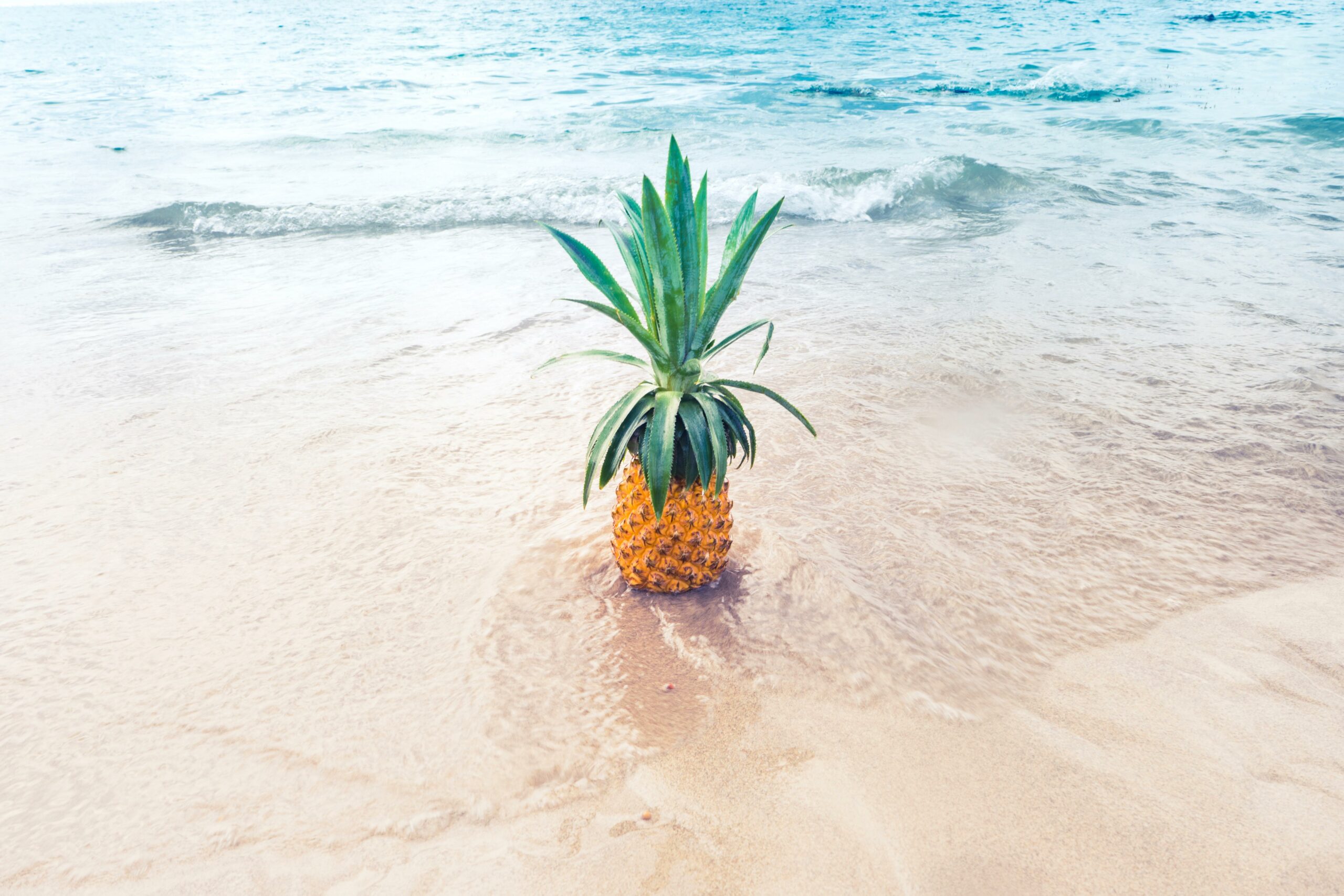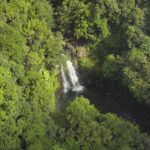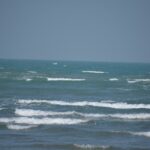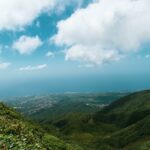Welcome to a world where nature flourishes, and the animal kingdom thrives. Brace yourself for an extraordinary journey as we unveil the hidden treasures of Guadeloupe’s diverse animal kingdom. In this article, we will dive deep into the captivating realm of Guadeloupe Animals, where stunning biodiversity awaits. From the enchanting rainforests to the crystal-clear waters surrounding this Caribbean paradise, we will explore the remarkable creatures that call Guadeloupe their home. Prepare to be amazed and inspired as we shed light on the conservation efforts dedicated to protecting these unique species and preserving the fragile balance of this remarkable ecosystem.

Guadeloupe Animals
The enchanting island of Guadeloupe, nestled within the Caribbean, boasts a vibrant and diverse animal kingdom that is teeming with unique species. From the stunning amphibians and reptiles to the magnificent mammals and birds, Guadeloupe’s fauna is a testament to the extraordinary biodiversity found on this tropical paradise. As an experienced wildlife conservationist and nature enthusiast, I have had the privilege of documenting and raising awareness about the remarkable animals that call Guadeloupe home.
One of the remarkable aspects of Guadeloupe’s animal kingdom is the presence of various amphibian species. With twelve different types of amphibians, including the Venezuela snouted treefrog and the Matouba robber frog, Guadeloupe showcases its rich ecological tapestry. These amphibians serve as important indicators of environmental health, and their vulnerability necessitates increased conservation efforts. The Tink frog and the Martinique robber frog are both endemic to Guadeloupe, making their preservation vital. They are classified as near threatened and endangered, highlighting the urgent need for conservation measures to protect their habitat.
Guadeloupe’s animal kingdom extends beyond amphibians to include an array of captivating mammals. The island is home to mesmerizing marine mammals like manatees and whales, offering unique opportunities for observation and study. The waters surrounding Guadeloupe play a crucial role in the migratory patterns and breeding grounds of these marine creatures. Meanwhile, terrestrial mammals such as bats and carnivorans contribute to the intricate web of biodiversity on the island. However, it is with a heavy heart that we must acknowledge the Caribbean monk seal, an inhabitant of Guadeloupe in the past. Tragically, this species is now considered extinct, underscoring the need for vigilance in protecting the remaining animal populations.
To experience Guadeloupe’s remarkable animal kingdom firsthand, one must explore the Guadeloupe National Park. This significant nature reserve, renowned for its tropical rainforest and diverse vegetation, offers a glimpse into the island’s unique ecosystem. The rainforest’s character and the species it harbors vary with elevation, presenting a fascinating mosaic of nature’s wonders. In addition to the diverse array of animals, Guadeloupe is home to numerous endemic plant species, including delicate orchids. The park alone hosts 30 vascular plant species found nowhere else, emphasizing the ecological importance of this protected area.
While the animal life in Guadeloupe may not rival that of some other tropical countries, it still offers a captivating range of creatures. Everywhere you turn, you might encounter iguanas basking in the sun, agoutis scurrying through the undergrowth, and a symphony of tropical birds serenading the air. The island’s waters are also teeming with an assortment of fish and crustaceans, adding yet another dimension to Guadeloupe’s animal kingdom. From the colorful butterflies fluttering through the forests to the vibrant crabs scuttling along the shoreline, there is no shortage of natural beauty to marvel at.
As we delve into the wonders of Guadeloupe’s animal kingdom, it is essential to recognize the importance of conservation efforts in preserving this fragile ecosystem. By understanding the ecological significance of each species and their roles within the intricate web of life, we can advocate for their protection. Through education and awareness, we can inspire others to appreciate the beauty and value of Guadeloupe’s diverse animal inhabitants. Together, we have the power to ensure the longevity of this Caribbean paradise and secure a future where future generations can still revel in its natural splendor.
“The remarkable animal kingdom of Guadeloupe serves as a reflection of nature’s awe-inspiring beauty. It is our responsibility to preserve this natural heritage and safeguard the delicate balance of life.”
Guadeloupe is a captivating destination that offers a plethora of interesting facts waiting to be discovered. Delve into the rich cultural heritage, stunning natural landscapes, and unique traditions of this beautiful Caribbean island. Are you curious to uncover more about Guadeloupe’s hidden gems? Explore these fascinating details that will leave you wanting to pack your bags immediately. Click here to dive into the interesting facts about Guadeloupe – interesting facts about Guadeloupe. Let the adventure begin!
Guadeloupe Animals
Discover the fascinating world of Guadeloupe native animals, a paradise unlike any other! From the vibrant rainforests to the azure waters surrounding the islands, Guadeloupe is home to a rich variety of animal species that are sure to captivate your imagination. Explore the hidden wonders of this tropical paradise and learn about the diverse array of wildlife that call it home. From the elusive and endangered species in Guadeloupe to the exotic wildlife that thrives in this unique ecosystem, there is so much to discover. Click here to delve into the enchanting world of Guadeloupe’s native animals: Guadeloupe native animals
But that’s not all! Guadeloupe is also known for its efforts in conservation, making it a sanctuary for endangered species in Guadeloupe. Witness the battles fought to protect these magnificent creatures and learn about the dedicated individuals who work tirelessly to safeguard their existence. Click here to delve into the world of endangered species in Guadeloupe: Endangered species in Guadeloupe.
Beyond the extraordinary, Guadeloupe is also home to exotic wildlife that will leave you in awe. Immerse yourself in the untamed wilderness and encounter creatures that you’ve only seen in dreams. From majestic birds soaring through the sky to colorful reptiles slithering through the undergrowth, the exotic wildlife of Guadeloupe will transport you to another realm. Click here to embark on an adventure into the enchanting world of Guadeloupe’s exotic wildlife: Exotic wildlife of Guadeloupe.
Join us as we discover the hidden treasures and remarkable stories behind Guadeloupe’s animal kingdom. These captivating creatures await you with open arms, inviting you into their extraordinary world. Don’t miss the chance to explore and learn about the incredible Guadeloupe native animals, endangered species, and exotic wildlife that make this tropical paradise truly exceptional. The journey starts here, with a click of a link.
to protect their eyes. This behavior can be seen as a warning sign to other sharks or animals to stay away, and it may have been what saved the diver’s life in this instance.
[youtube v=”wsB20zsfF8U”]
Despite the close encounter, the research team remains determined to uncover the secrets of the great white sharks at Guadalupe Island. With the arrival of the new boat part, they are ready to resume their expedition and attach the shark cam to a white shark’s dorsal fin.
The shark cam is a state-of-the-art camera that will allow the researchers to see what the sharks see as they swim and hunt. It will give them unprecedented access to the hunting techniques and behaviors of these fearsome predators. The team hopes that the footage captured by the shark cam will reveal valuable insights into white shark mating and birthing, as well as shed light on the mysteries that still surround these apex predators.
Guadalupe Island, located more than 250 miles southwest of San Diego in the Mexican Pacific, is a paradise for marine biologists like Connor White and Dr. Maurizio Hoyos. It is home to a thriving population of over 200 white sharks, making it one of the best white shark research sites in the world.
The island’s harsh and barren environment, with its rocky coastline and lack of fresh water and vegetation, may not be suited for human habitation, but it provides the perfect habitat for white sharks and their prey. Seals, sea lions, and marine mammals like elephant seals and fur seals flourish here, attracting the white sharks that rely on them for sustenance.
The researchers are particularly interested in understanding why white sharks gather at Guadalupe Island and what attracts them to this remote volcanic island. They want to know how much time the sharks spend here, where they come from, and what they are doing when they go deep below the surface.
One prevailing theory is that the great white sharks at Guadalupe take advantage of the island’s clear waters and good visibility to ambush their prey. In clear water, seals and sea lions can easily detect sharks swimming near the surface, so the sharks descend into the deeper, darker waters where they cannot be seen and wait for the perfect moment to strike.
Maurizio believes that the shark cam will provide evidence to support this theory. By capturing footage of deep water kills, they hope to prove that the sharks are indeed disabling northern elephant seals in deep waters, a phenomenon that has yet to be observed.
As they resume their expedition, the research team faces many questions and uncertainties. They are eager to see what the shark cam will reveal and how it will challenge popular misconceptions about white sharks. Maurizio, who has dedicated his life to studying these fascinating creatures, hopes that his research will dispel the myths and fears surrounding white sharks and shed light on their true nature.
For now, they continue their work, braving the unpredictable nature of these apex predators to unlock the secrets of the great white sharks at Guadalupe Island. With each new discovery, they come one step closer to understanding these magnificent creatures and ensuring their protection for generations to come.
(Note: This article section is to be placed between the introduction and conclusion provided by the requester.)
FAQ
Question 1: What is the significance of Guadeloupe’s diverse animal kingdom?
Answer 1: Guadeloupe’s diverse animal kingdom holds great significance as it contributes to the island’s unique ecosystem and biodiversity. By preserving these animal species, we can maintain the delicate balance of the natural environment and ensure its sustainability for future generations.
Question 2: What are some of the endemic amphibian species found in Guadeloupe?
Answer 2: Guadeloupe is home to several endemic amphibian species, including the Venezuela snouted treefrog, the Matouba robber frog, the Tink frog, and the Martinique robber frog. These species are not found anywhere else in the world, making their conservation of utmost importance.
Question 3: What mammals can be found in Guadeloupe?
Answer 3: Guadeloupe is inhabited by a variety of mammals, such as manatees, bats, whales, and carnivorans. However, it’s important to note that the Caribbean monk seal, which used to be found in Guadeloupe, is now considered extinct.
Question 4: What is the significance of Guadeloupe National Park for wildlife conservation?
Answer 4: Guadeloupe National Park is a significant nature reserve on the island, known for its tropical rainforest and diverse vegetation. It provides a protected habitat for various animal species and plays a crucial role in wildlife conservation efforts.
Question 5: What are some of the notable endemic plant species in Guadeloupe?
Answer 5: Guadeloupe is home to several endemic plant species, including orchids. The park within the island houses 30 vascular plant species that can be found nowhere else. These unique plant species contribute to the overall biodiversity and natural beauty of Guadeloupe.
“`json
“`
- Star Ring Trends: Etsy vs Amazon - March 28, 2025
- Boost Pollinator Habitats: Baby Blue Eyes Sustainable Farming Guide - March 28, 2025
- Protect Big Black Bears: Effective Conservation Strategies - March 28, 2025
















